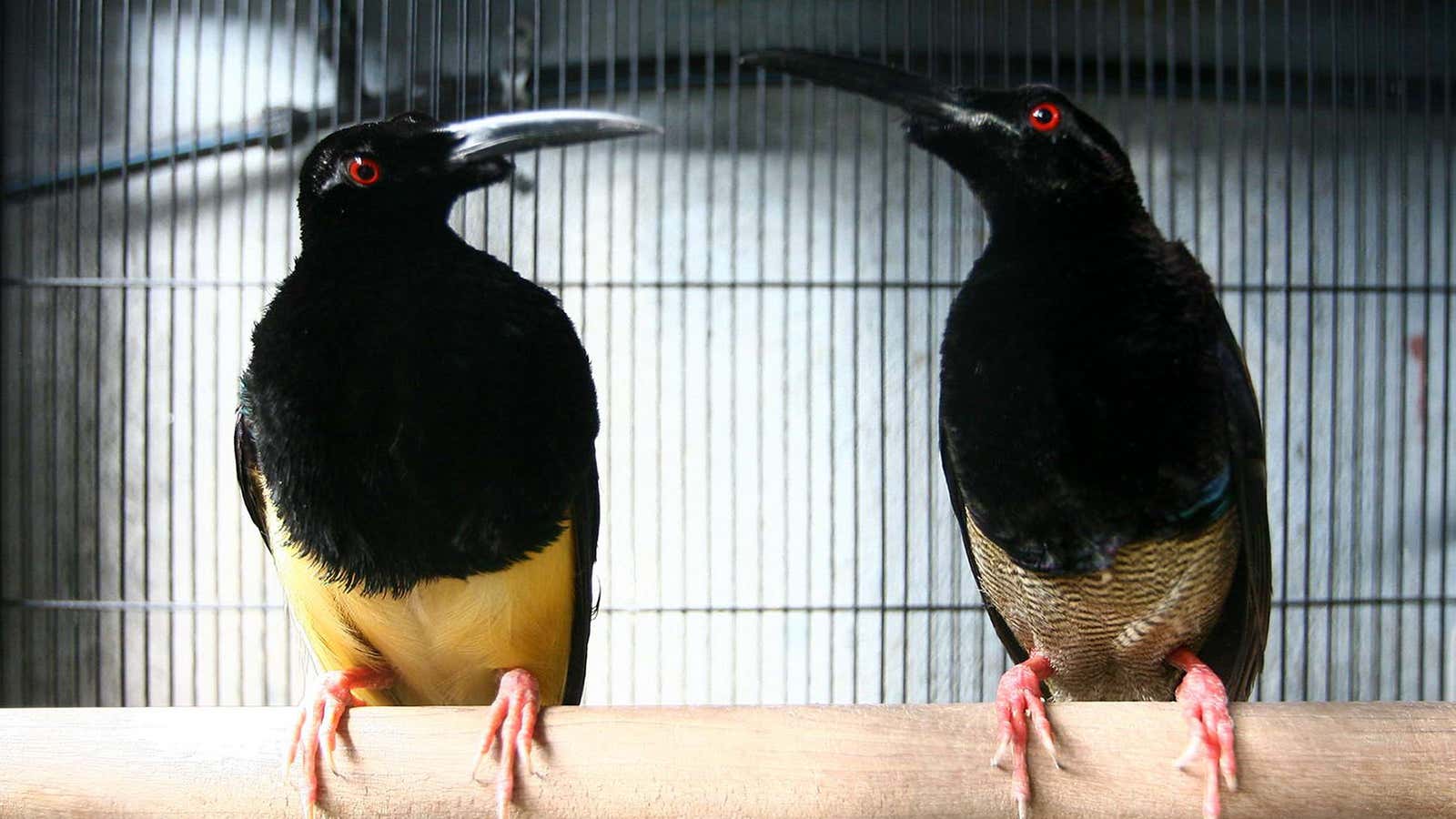Black, a sexy, slimming color favored by mate-hunting humans, turns out to also be a color of courtship among birds.
In a new study published in the journal Nature Communications, researchers report that the success of the mating dance of male birds-of-paradise (not to be confused with the flower) is not due to their hypnotic jiggle but to their black, light-absorbing plumage. The study looked at six species of of birds-of-paradise, native to Papua New Guinea, Indonesia, and Australia. By spreading their wings during courtship, the small birds create a black feather-barrier that absorbs up to 99.95% of light. This somehow makes all the colors around them appear more brilliant and this vibrant aura scores them mates, according to the researchers.
“The juxtaposition of darkest black and colors create to bird and human eyes what is essentially an evolved optical illusion,” explains Harvard University evolutionary biologist Dakota McCoy who co-authored the study with researchers from Yale University and the Smithsonian National Museum of Natural History.
“This study shows us that black makes us glow,” says McCoy. So, men, next time you’re waffling on what to wear on a date, go with black—it makes everyone look good.
Researchers say the discovery has implications that go beyond romantic dalliances among these members of the paradisaeidae family of birds. ”There’s lots of reasons we humans want to absorb light effectively—some aesthetic, some material,” says McCoy.
“Hopefully, engineers can use what the bird of paradise teaches us to improve our own human technologies as well,” says Yale University professor Rick Prum, the study’s senior author. For example the the edge of the birds’ feathers are frayed to catch trap more light; these light-absorbent qualities could be used by engineers to develop more efficient solar panels.
NASA has spent a over a decade perfecting a super-black nanotechnology that will make their instruments more sensitive. McCoy notes that that birds-of-paradise feathers are easier to study than the nano-scale material most super-black researchers are dealing with.
As for the aesthetic side of things: Currently, artist Anish Kapoor asserts exclusive rights to “the blackest black shade” that he’s invented. Perhaps the birds of paradise feathers could give other artists an alternative with which to challenge that claim.
